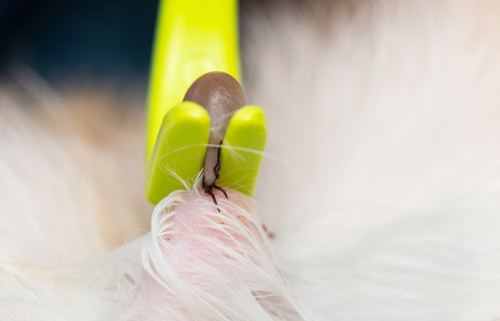Tick Removal for Dogs
Unfortunately, your dog may encounter a tick during their lifetime. Regardless of the small size of the tick, they can cause harm to your dog. Therefore, it is important to check your dog frequently for ticks and remove them as soon as possible. This article will explain what ticks are and why they are dangerous and give tips on how to remove them from your furry friend.
Ticks are tiny parasitic creatures. They latch onto a dog’s skin and suck their blood to stay alive. They are comparable to a spider with eight legs and can vary in size between 1mm and 1cm. Your dog may pick up ticks in tall grassland areas as well as the woods. Although ticks are more common in summer months, they can be present year around!
Ticks are small and mighty. They carry microbes and diseases such as Lyme disease and Babesiosis. These diseases contain bacterial infections which may cause a lack of appetite, inflamed joints, fever, or even swollen lymph nodes. If your dog is experiencing any of these symptoms, we highly recommend that you take them to the veterinarian.
You are probably wondering where ticks like to go to on a dog’s body. Technically, they can latch anywhere, however, you may find them hiding in or around a dog’s ear or between their paws. Ticks look for moist areas. Removing ticks can be a tricky task as they use their eight legs to burrow deeply into a dog’s flesh.
You may be tempted to go full force with tweezers, but we recommend taking the following steps before attempting the procedure.
- Clean the area with an antiseptic solution such as rubbing alcohol.
- It is important that you use clean tools! Use the same solution to sterilize the tweezers (or tick-removing device). This will help prevent further infections.
- Be sure to use fine-pointed tweezers and always avoid using your hands.
Once you complete these steps, it is time to take a secure grip on the tick. Use a twisting motion to ensure that the tick’s entire body is removed. Do not be afraid to visit your vet if you are struggling with the procedure yourself. The last thing you want to do is lodge the tick further into your dog’s skin. If you can successfully remove the tick, clean the area gently with rubbing alcohol. Continue to monitor the area for the next few days to ensure that there are no signs of infection.



